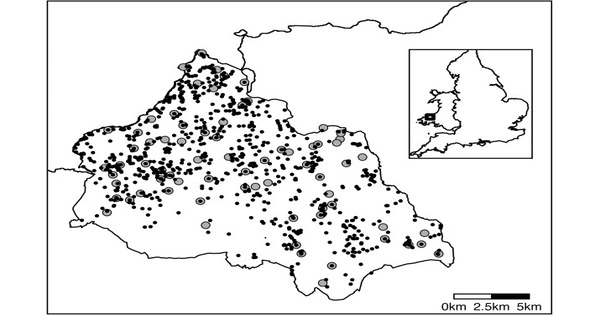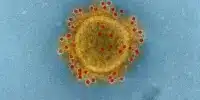Vaccination is an effective method for disease control in wildlife populations. However, its effectiveness is dependent in part on reaching a sufficient proportion of the target population. Measuring the proportions of wild animal populations that have been vaccinated is difficult, so there is a need to develop robust approaches that can contribute to our understanding of the likely efficacy of wildlife vaccination campaigns.
Researchers create a groundbreaking model to estimate bait vaccination effectiveness in wild animals based on the proportion of immunized animals in a population and the number of vaccine applications.
Pathogens that cause a wide range of infectious diseases, including zoonotic diseases such as rabies, influenza, and tuberculosis, live in wild animals. The control of these diseases in wild animals is a critical issue in the fields of public health, livestock health, and conservation biology. Vaccinating wildlife with bait containing oral vaccines is one of the most widely used methods of control (bait vaccination). However, determining the effectiveness of these vaccines has proven difficult.
Our model can be used to more accurately gauge the effect of oral vaccines for a variety of diseases, to investigate different methods of oral vaccine application, and to design improved vaccination strategies for populations of wild animals where migration is negligible.
Ryosuke Omori
A team of scientists led by Associate Professor Ryosuke Omori at the International Institute for Zoonoses Control, Hokkaido University, has developed a ground-breaking model to estimate the effectiveness of bait vaccination in wild animals. Their model and findings were published in the journal PLOS Computational Biology.
In 2018, an outbreak of classical swine fever (CSF) was reported for the first time in Japan after 26 years. CSF reemerged in a pig farm in Gifu prefecture, and wild boars in the same area were also found to be infected. Since the infection among wild boar continued to spread, a bait vaccination campaign was started from 2019.
To understand the effectiveness of this campaign, the authors first constructed a mathematical model that describes relationships between three variables: changes over time in the proportion of immunized animals, the number of vaccine applications, and the effects of vaccines. Thus, by determining the proportion of immunized animals in a population, and combining data about the number of vaccine applications, it is possible to estimate the effects of vaccines that were measured as a proportion of animals that acquired immunity by the vaccination.

The model was tested using real data collected during the bait vaccination campaign conducted in response to the CSF outbreak in wild boars, and it demonstrated that the vaccines measurably increased the proportion of immunized animals in wild boars.
This is the first study to show unequivocally that CSF bait vaccination in Japan caused a quantitative increase in the proportion of immunized animals in wild boars; it is also the first to specifically quantify the increase in immunized animals. The model is groundbreaking because it does not require data on the number of wild animal populations, their movements within the study area, or the history of bait vaccine intake.
“Our model can be used to more accurately gauge the effect of oral vaccines for a variety of diseases, to investigate different methods of oral vaccine application, and to design improved vaccination strategies for populations of wild animals where migration is negligible,” says Ryosuke Omori.
Vaccination’s effectiveness as a disease control measure is influenced by a number of factors, including disease prevalence, vaccine efficacy, and, most importantly, vaccine coverage in the target population. Post-vaccination surveillance is typically used to detect direct or indirect markers of vaccination in the target species in attempts to estimate vaccine coverage in wild animals.
















